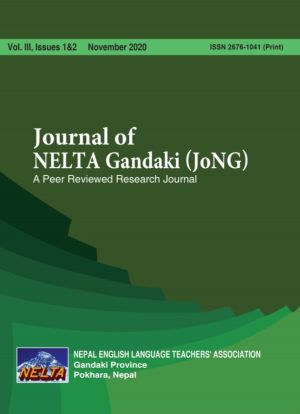A Rasa Reading of Prayer on a Clear Morning in the Month of Magh
DOI:
https://doi.org/10.3126/jong.v3i1-2.33146Keywords:
emotions, peace, rasa, sama, śānta rasa, tranquilityAbstract
The study examines how the persona perpetually searches tranquility in the poem entitled “Prayer on a Clear Morning in the Month of Magh” by Laxmi Prasad Devkota. For the study, I have entered into rasa reading to explore the sovereignty of śānta rasa, which is pervasively dominant in the poem. As the nature of śānta rasa, all emotions merge out of śānta and finally in the end, submerge into it. Primarily, the determinant, consequent, and transitory emotions are identified and further analyzed to illustrate how they conjoin. Through the discussion, it appears that any sensitive readers of the poem could identify themselves to the persona’s emotion as one involves in prayer. It stands as the devotion and celebration of the God and nature in the month of Magh; that represents creation and clarity. It happens there suspending ‘I’, surpassing ego, and searching metamorphosis of the lustrous desires, fabric beauty, and worldly pain for overcoming both life and death enjoying the elixir of the Sun and learning the lesson from the God. As a result, the persona believes in the dying down of the worldly dream to achieve delight and disillusionment eliminating shiny lacy veils entrapping humanity. Thus, the poem searches tranquility as a state of pure peace relishing utmost and absolute aesthetic pleasure, sama. Finally, it expands the scope of the Eastern aesthetics, especially unfolding and widening the area of śānta rasa, which is usually overlooked even in the Eastern literature.
Downloads
Downloads
Published
How to Cite
Issue
Section
License

This work is licensed under a Creative Commons Attribution-NonCommercial 4.0 International License (CC BY-NC). This license allows reusers to distribute, remix, adapt, and build upon the material in any medium or format for noncommercial purposes only, and only so long as attribution is given to the creator.




